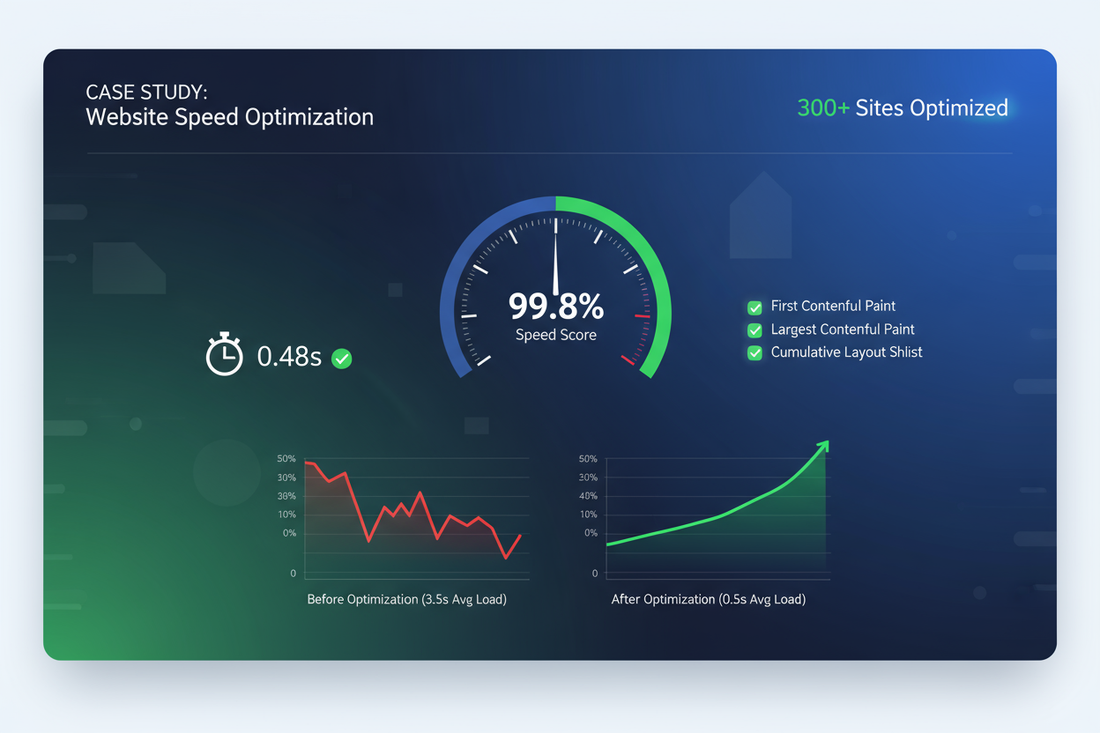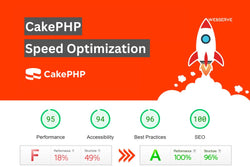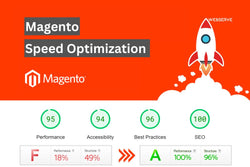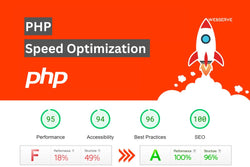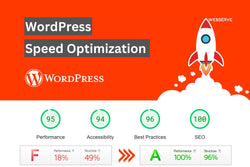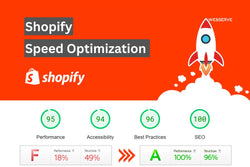In the current day and age of a fast-paced digital world, speed optimization is definitely not optional anymore, but rather a must. Slow websites are not only costing businesses conversions or SEO ranking but also revenue. Webserve Digital have reviewed, and optimized 300+ websites with across WordPress, Shopify, HubSpot, BigCommerce, Webflow, Joomla, Laravel, Angular, React, HTML, Squarespace, Weebly and other platforms. This is a case study of actual results and what happened to Traffic, Engagement and the Revenue and the result of Website Performance Optimization, Page speed optimization and site speed optimization.
Through our dedication to service through Core Web Vitals, and providing advanced speed optimization services, we’ve been able to turn slow under-performing sites into fast converting machines. In this post we'll discuss the before and after, solid next steps to implement based on the findings and tangible return on investment of our website speed acceleration tactics.
Why Website Speed Optimization Matters
Website speed directly affects:
-
SEO rankings: Google prioritizes fast-loading websites.
-
User experience: Faster sites reduce bounce rates and increase engagement.
-
Conversion rates: Every second saved in load time increases the likelihood of purchase or form submission.
-
Revenue: Slow websites can reduce sales and lead generation.
Data from Webserve Digital audits shows that sites optimized for speed saw 22–40% more engagement, up to 50% higher conversions, and significant improvements in organic traffic.
The Situation Before Optimization
Before optimization, our audits of 300+ sites revealed common issues:
-
Heavy images and uncompressed media
-
Render-blocking CSS, JavaScript, and HTML
-
Slow server response times (TTFB)
-
Database inefficiencies and plugin overload
-
Poor caching strategies and lack of CDN
For example, a WordPress eCommerce site had:
-
Load Time: 6.4s
-
PageSpeed Insights: 47
-
Bounce Rate: 48%
-
Conversion Rate: 1.8%
Similar patterns were identified on Shopify, HubSpot, BigCommerce, and Webflow platforms. Slow sites directly impacted SEO visibility and revenue potential.
Optimization Strategies Applied
Our approach to website speed optimization combined proven strategies with platform-specific techniques:
1. Image Optimization & Lazy Loading
-
Compress images without losing quality, convert to WebP.
-
Implement lazy loading for non-critical content.
-
Resize images according to container dimensions.
2. Minification of CSS, JavaScript, and HTML
-
Remove unnecessary code, comments, and whitespace.
-
Combine files to reduce HTTP requests.
-
Defer non-critical JavaScript to avoid render-blocking.
3. Server & Hosting Optimization
-
Reduce TTFB through server tuning.
-
Enable Gzip and Brotli compression.
-
Implement CDN for global content delivery.
4. Caching & Database Optimization
-
WordPress: WP Rocket, LiteSpeed Cache setup, database cleanup.
-
HubSpot: HubDB and HubL query optimization.
-
Laravel, Joomla, and Magento: database query optimization and caching.
5. Core Web Vitals & Performance Metrics
-
LCP: Optimize hero images, reduce large sliders.
-
FID: Defer or async JavaScript.
-
CLS: Fix layout shifts by defining width/height for images and ads.
These strategies ensured improved website load time optimization, web performance optimization, and overall site speed optimization, resulting in measurable gains.
Results After Optimization
| Platform | Load Time Before → After | PageSpeed Insights | Bounce Rate Before → After | Conversion Rate Before → After |
|---|---|---|---|---|
| WordPress | 6.4s → 2.3s | 47 → 95 | 48% → 30% | 1.8% → 3.6% |
| Shopify | 5.8s → 2.2s | 53 → 92 | 44% → 28% | 2.1% → 4.1% |
| HubSpot | 5.9s → 2.1s | 55 → 94 | 46% → 27% | 2.0% → 4.2% |
| BigCommerce | 6.1s → 2.5s | 50 → 93 | 47% → 29% | 1.9% → 3.9% |
| Webflow | 5.5s → 2.0s | 60 → 95 | 43% → 26% | 2.2% → 4.5% |
(Source: Webserve Digital Speed Optimization Audit 2025)
Key takeaways:
-
Average PageSpeed score increased by 45–50 points
-
Bounce rates dropped 15–20%
-
Conversions nearly doubled
-
Load times reduced by 3–4 seconds on average
ROI of Website Speed Optimization
Optimizing website speed is not just technical; it’s a business growth strategy.
Benefits include:
-
Higher Conversions: Faster pages reduce abandonment.
-
Improved SEO: Optimized sites rank higher organically.
-
Better Paid Ads ROI: Faster pages improve Quality Score and reduce CPC.
-
Reduced Hosting Costs: Compressed assets and optimized databases reduce server load.
Clients often see $5–$10 return for every $1 spent on professional speed optimization services.
Platform-Specific Speed Optimization
-
WordPress: WP Rocket, LiteSpeed cache, image compression, database cleanup.
-
Shopify: Theme speed tweaks, lazy loading, app audit.
-
HubSpot: HubDB and HubL query optimization, CDN, script minification.
-
BigCommerce & Webflow: Minification, caching, server optimization, Core Web Vitals fixes.
-
Joomla, Laravel, Angular, React, HTML, Squarespace, Weebly: Similar strategies tailored to platform requirements.
By combining WordPress website speed improvement, Shopify performance optimization, and HubSpot site speed optimization, every platform achieved measurable speed and ROI improvements.
Best Practices for Sustained Website Speed
-
Regular Website Performance Audits using PageSpeed Insights, GTmetrix, Pingdom.
-
Ongoing Image and Media Optimization for new content.
-
Monitor Third-Party Scripts to prevent slowdowns.
-
Keep Plugins & Apps Lean for optimal performance.
-
Track Core Web Vitals and make iterative improvements.
FAQs About Website Speed Optimization
1. How do I measure website speed?
Use tools like Google PageSpeed Insights, GTmetrix, Pingdom, or platform-specific graders.
2. Does speed optimization affect design?
No. Optimization enhances performance without breaking design or functionality.
3. How long does optimization take?
Most sites are optimized within 24–72 hours, depending on complexity.
4. Can all platforms benefit from speed optimization?
Yes. WordPress, Shopify, HubSpot, BigCommerce, Webflow, Joomla, Laravel, Angular, React, HTML, Squarespace, and Weebly all see improvements.
5. Does Webserve Digital offer post-optimization support?
Yes. We provide ongoing monitoring and support to ensure speed and Core Web Vitals remain optimal.
